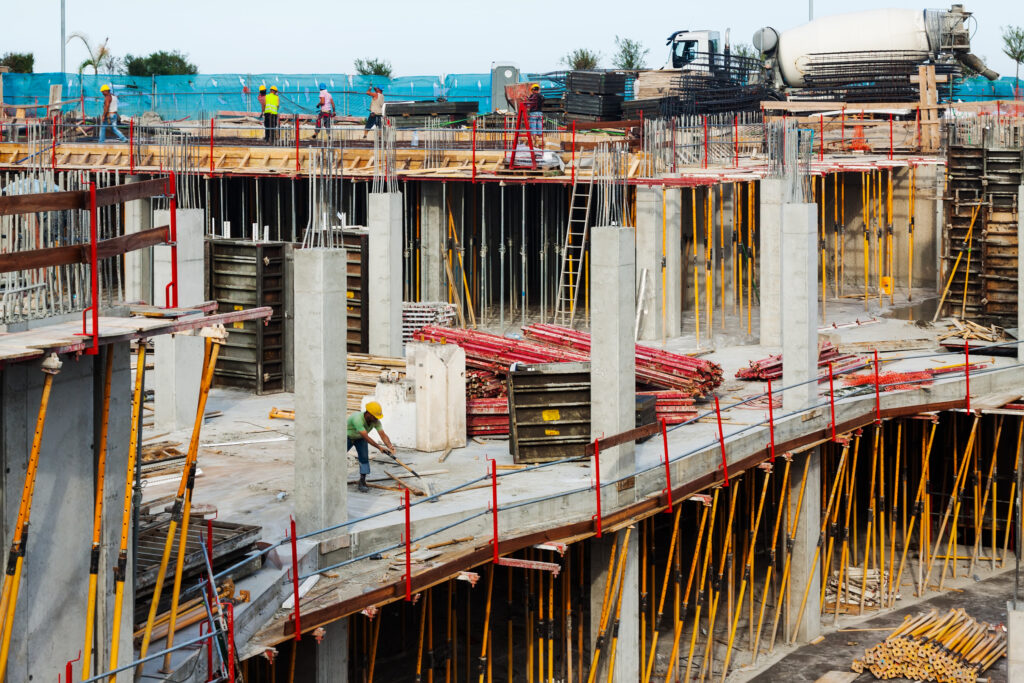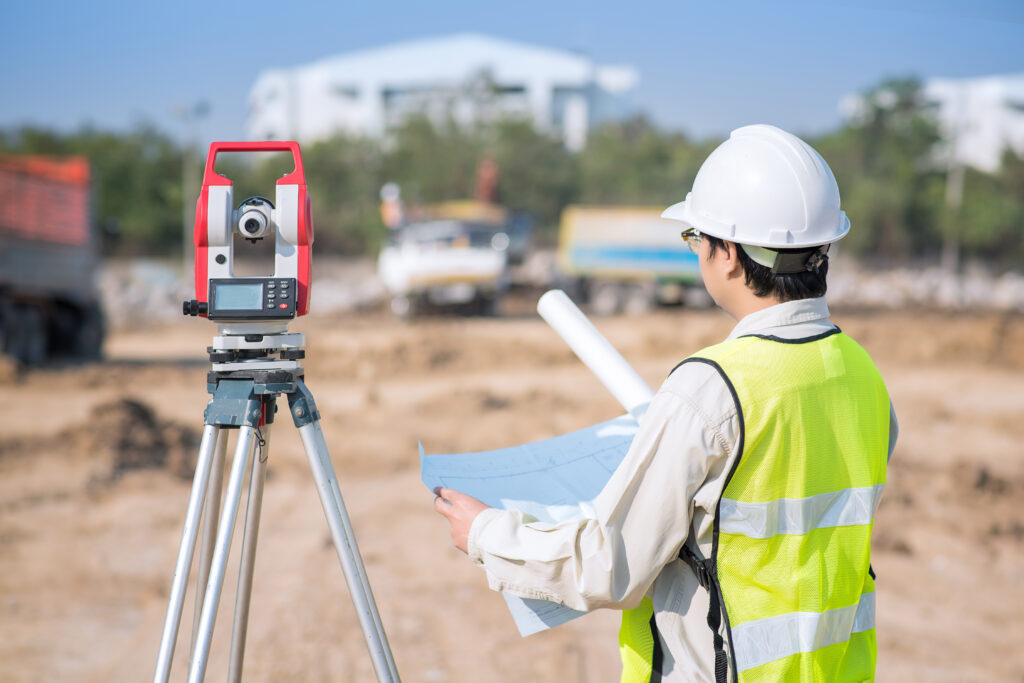In the fast-paced construction world, even a minor error can lead to significant consequences. From delays and budget overruns to safety hazards and legal issues, the cost of getting things wrong adds up fast. That’s why construction surveys are essential. They serve as the foundation for accuracy, compliance, and long-term success.
At Arc Surveying and Mapping, Inc., we’ve seen firsthand how construction surveys prevent building errors. With over 35 years of experience, our team ensures that every structure starts on solid ground—literally and figuratively.
In this article, we’ll explain construction surveys, how they help prevent errors, and why they’re a must-have for every construction project.
What Is a Construction Survey?
A construction survey is a specialized land survey that guides the building process. It involves marking precise reference points, lines, and elevations on the ground. These markers help builders know exactly where and how to build.
Construction surveys can include:
- – Boundary surveys
- – Topographic surveys
- – As-built surveys
- – Stakeout or layout surveys
- – Utility location surveys
While each survey type has its purpose, they all share one mission: preventing costly errors before they happen.
Why Building Errors Happen Without Surveys
Many construction errors stem from inaccurate or missing data. Without the correct measurements, teams can misplace foundations, misjudge elevation, or build outside property lines. These errors can lead to:
- – Structural failures
- – Code violations
- – Neighbor disputes
- – Costly redesigns or demolitions
- – Project delays
Unfortunately, fixing a mistake is often more complicated and expensive than preventing it once it is discovered.
How Construction Surveys Prevent Building Errors
Let’s break down the specific ways construction surveys help avoid mistakes on-site.
1. They Provide Accurate Site Data
Before any building begins, surveyors map the site with high precision. This includes property boundaries, topography, and existing structures or utilities. Builders use this data to make informed decisions and avoid surprises.
2. They Ensure Legal Compliance
Surveys help ensure your project complies with zoning laws, building codes, and environmental regulations. For example, a boundary survey can prevent encroachment on neighboring land, while an elevation certificate might be required for floodplain compliance.
3. They Guide Construction Activities
With layout or stakeout surveys, surveyors mark exactly where each part of a structure should go—walls, columns, roads, utilities, and more. This minimizes errors during excavation and construction.
4. They Catch Mistakes Early
Ongoing surveys, such as as-built surveys, compare the current construction to the original plans. If discrepancies are found, corrections can be made early, before the mistake becomes too costly to fix.
5. They Improve Communication Between Teams
Survey data helps engineers, architects, and contractors stay on the same page. Everyone uses the same base information, which reduces misunderstandings and ensures alignment.
6. They Save Time and Money
Correcting an error after the fact often involves halting construction, tearing down what’s been built, and starting over. With precise surveying, you can avoid these setbacks and keep your project on schedule and within budget.

Real-World Example: The Value of Precision
Consider a case where a commercial building foundation was poured in the wrong location due to a lack of proper layout surveys. The building was five feet over the setback line. The result? Thousands of dollars in fines, months of delay, and a complete redesign of the site plan.
This could have been avoided entirely if the construction team had partnered with a certified surveying company like Arc Surveying and Mapping, Inc..
When to Hire a Surveyor
Construction surveys should happen early and often. Engage a professional surveyor at these key stages:
- – Before land purchase (due diligence)
- – During site preparation
- – Before pouring foundations
- – After major construction phases (as-builts)
- – During final inspections
Partnering with a reputable firm ensures your project gets the attention it deserves from start to finish.
Choose the Right Surveying Partner
For a crucial project like your construction project, you need experience and precision. At Arc Surveying and Mapping, Inc., we offer both.
We offer:
- – Construction staking and layout
- – Bathymetric and hydrographic surveys
- – Boundary and topographic surveys
- – GIS and 3D mapping
- – UAV drone surveys
- – Environmental and geophysical data collection
Our team includes certified hydrographers, geophysicists, surveyors, and mappers ready to support projects of all sizes.
Conclusion: Don’t Build Without a Survey
Construction surveys prevent building errors by providing clarity, accuracy, and accountability. They protect your investment and ensure your project runs smoothly from day one.
If you’re planning a construction project, don’t cut corners—start with the right data.
Don’t cut corners—start with the right data. Contact Arc Surveying and Mapping, Inc. today to discuss your next project.
Resource:
Learn more about the preliminary works in construction in this external article from The Constructor.

